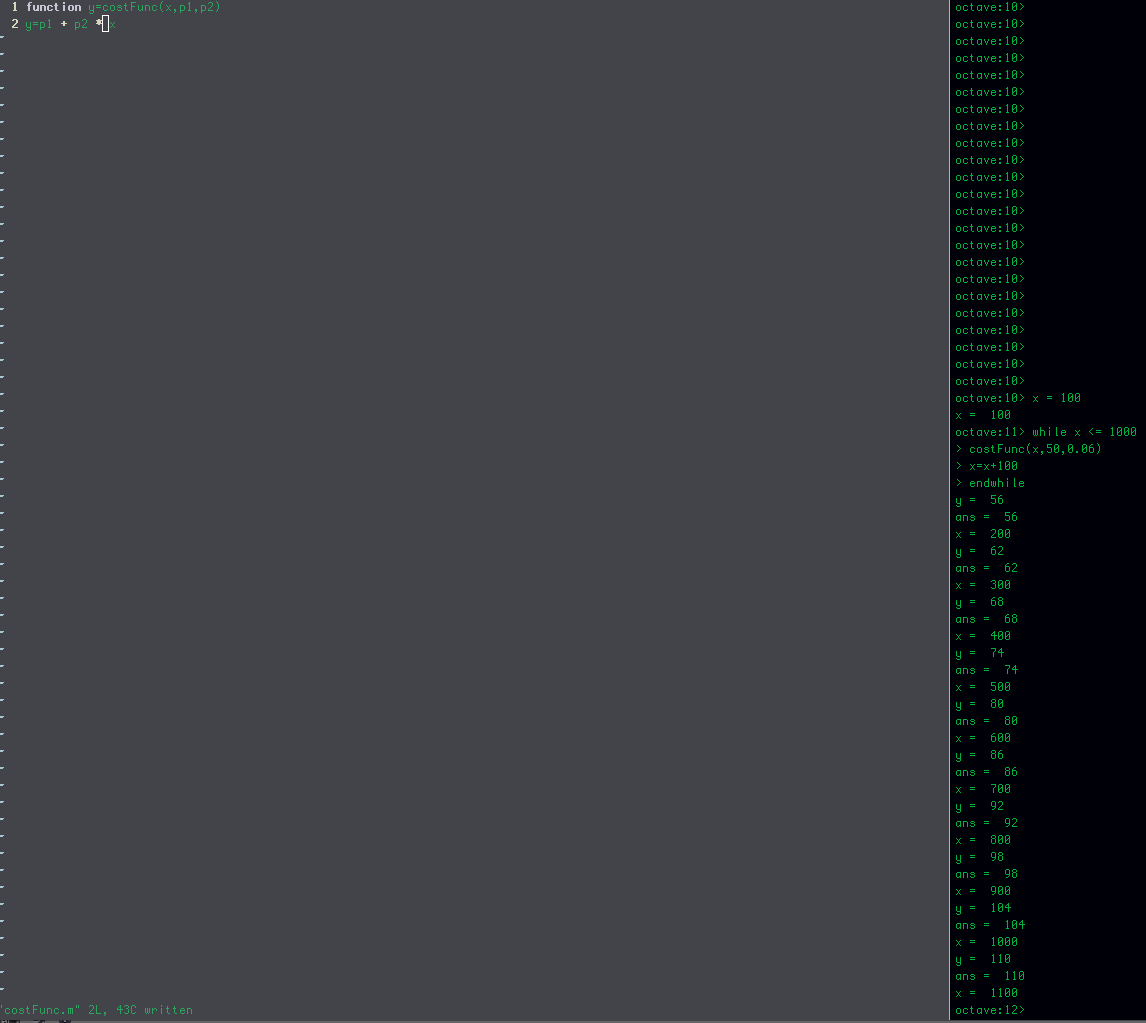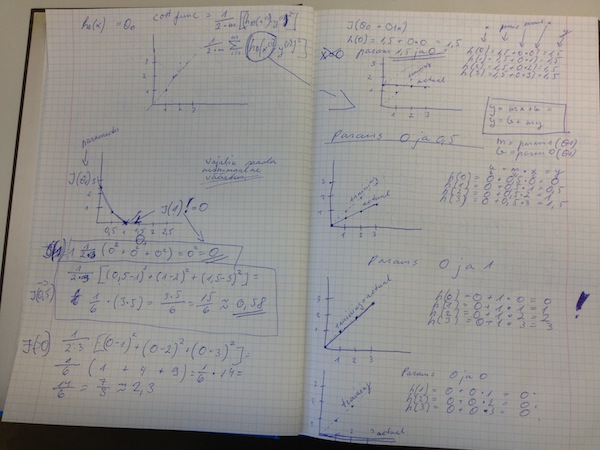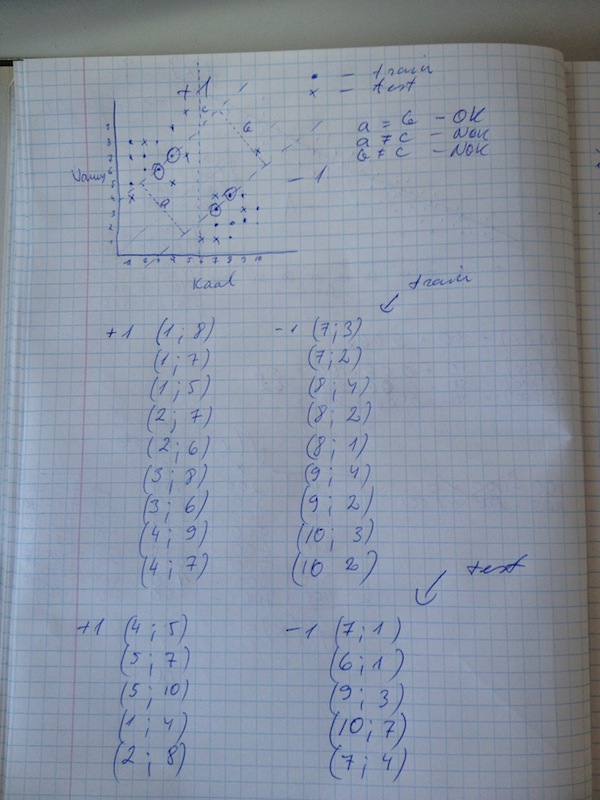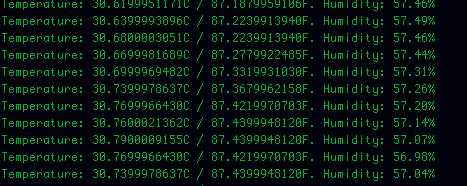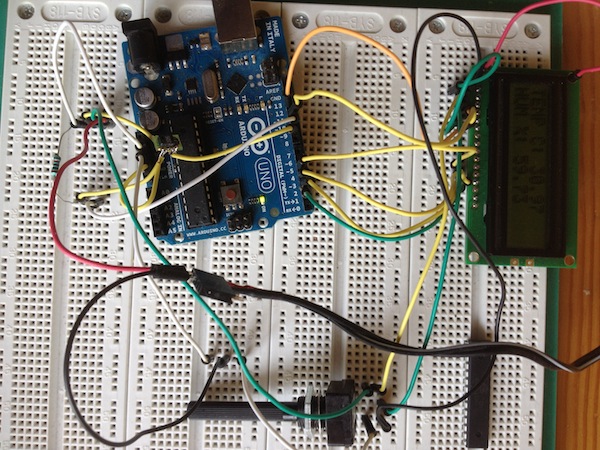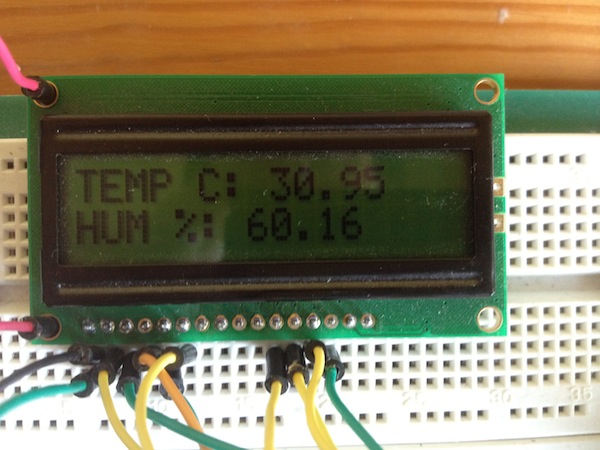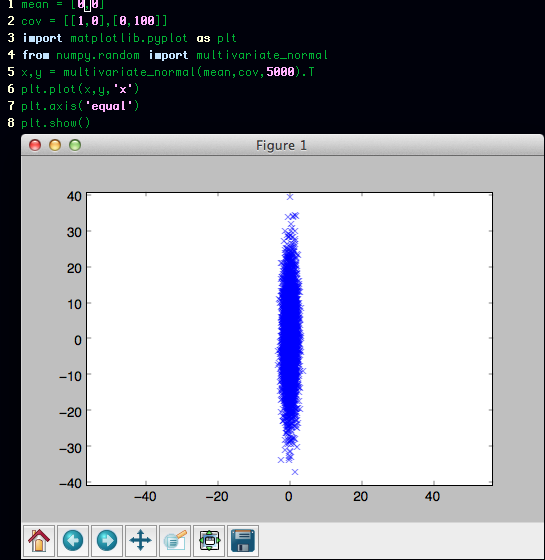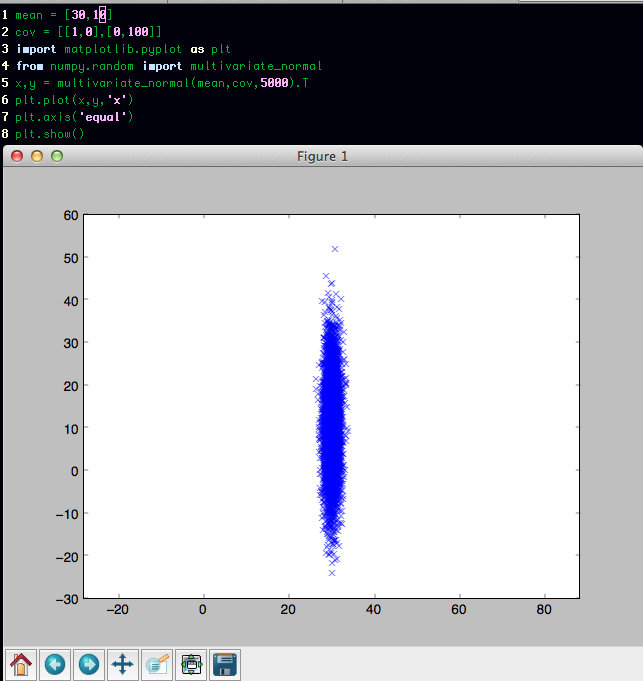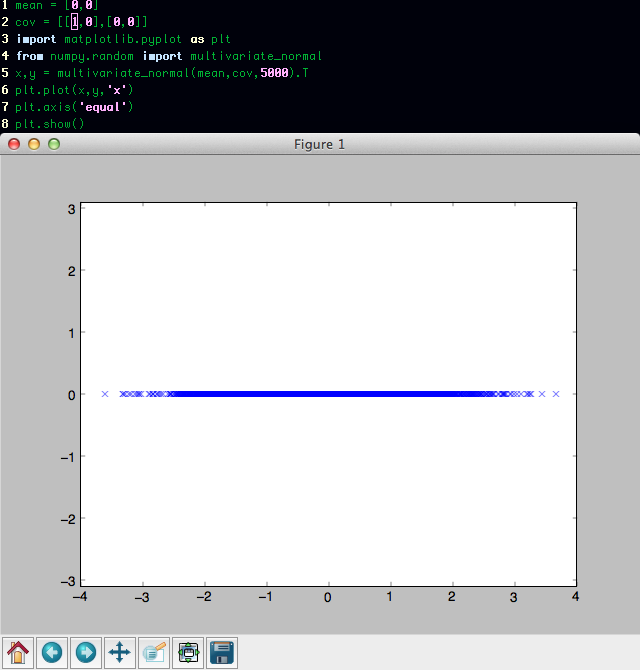Viimase aja südamesse mineva lugu
Linear regression and cost function with octave
Tööpäev ja tulemus
Moskvich 401
Lihtne temperatuuri ja niiskuse mõõdik
Komponendid:
Arduino Uno komplekt
SHT10
LCD display
10K takisti
Kasutasin SHT1x lib for arduino https://github.com/practicalarduino/SHT1x ja arduino LCD lib http://arduino.cc/en/Tutorial/LiquidCrystal.
Esmalt ühendasin SHT10 ja kontrollisin kas andmed on mõistlikud – ei olnud. Peale 10K pull up takisti paigaldamist sain rahuldavad andmed.
Nüüd ühendasin LDC display ja lisasin koodile LDC lib ja vastavad read, et info jõuaks LCD display peale.
Kogu kupatus sai selline pusa
Ja tulemus siin
Edasise arengu huvides tõstsin kivi eraldi, ei saa ju iga lõpplahenduse jaoks tervet arduino konstruktorit võtta 🙂
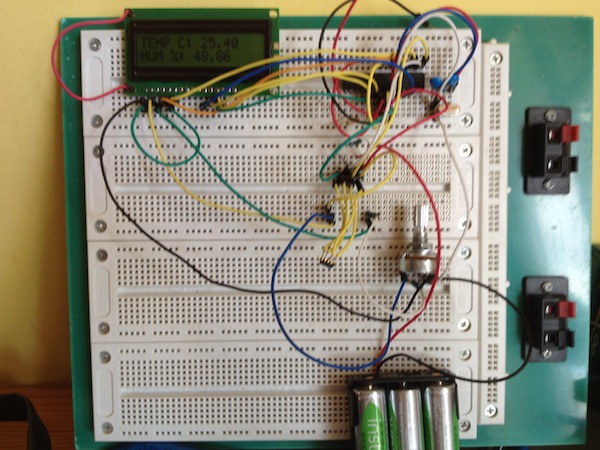
Vectorization is simple ;)
numpy.diag
numpy.diag(v, k=0)
Leiab masiivist diagonaalväärtused
>>> x = np.arange(9).reshape((3,3))
>>> x
array([[0, 1, 2],
[3, 4, 5],
[6, 7, 8]])
>>> diag(x)
array([0, 4, 8])
>>> x = arange(25).reshape((5,5))
>>> x
array([[ 0, 1, 2, 3, 4],
[ 5, 6, 7, 8, 9],
[10, 11, 12, 13, 14],
[15, 16, 17, 18, 19],
[20, 21, 22, 23, 24]])
>>>
>>> diag(x)
array([ 0, 6, 12, 18, 24])
>>> diag([0,10])
array([[ 0, 0],
[ 0, 10]])
numpy.random.multivariate_normal
Paari sõnaga enda jaoks numpy.random.multivariate_normal(mean, cov[, size]) kasutamisest.
Funktsiooni argumendid:
mean – nn keskmine kujul X,Y skaalal. Seab genereeritavale andmehulgale nn keskpunkti, mille ümber andmekogu genereeritakse.
Näiteks [0,0]
[30,10]
Parameeter cov (X,Y) [X = [X1,Y1], Y=[X2,Y2]] Kontrollivad genereeritava array nn pikkust ja laiust e shape
X1 ja X2 kontrollivd X suunal (horisontaalsuunal):
[[1,0],[0,0]]
Argument size – Genereeritavate elementide arv.
Bit Fields
Bit Fields allow the packing of data in a structure. This is especially useful when memory or data storage is at a premium. Typical examples:
Packing several objects into a machine word. e.g. 1 bit flags can be compacted — Symbol tables in compilers.
Reading external file formats — non-standard file formats could be read in. E.g. 9 bit integers.
C lets us do this in a structure definition by putting :bit length after the variable. i.e.
struct packed_struct {
unsigned int f1:1;
unsigned int f2:1;
unsigned int f3:1;
unsigned int f4:1;
unsigned int type:4;
unsigned int funny_int:9;
} pack;
Here the packed_struct contains 6 members: Four 1 bit flags f1..f3, a 4 bit type and a 9 bit funny_int.
C automatically packs the above bit fields as compactly as possible, provided that the maximum length of the field is less than or equal to the integer word length of the computer. If this is not the case then some compilers may allow memory overlap for the fields whilst other would store the next field in the next word (see comments on bit fiels portability below).
Access members as usual via:
pack.type = 7;
NOTE:
Only n lower bits will be assigned to an n bit number. So type cannot take values larger than 15 (4 bits long).
Bit fields are always converted to integer type for computation.
You are allowed to mix “normal” types with bit fields.
The unsigned definition is important – ensures that no bits are used as a flag.
